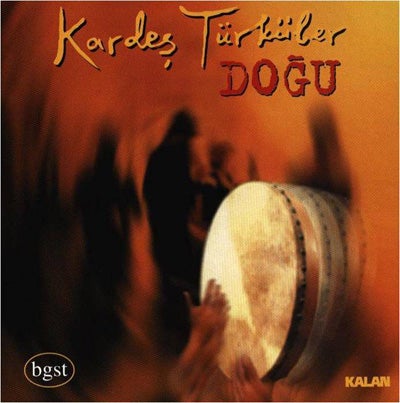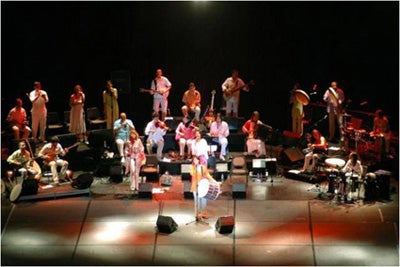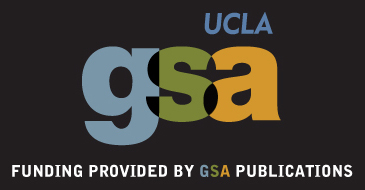Obscured Hybridity: The Kurdishness of Turkish Folk Music
Winner of the Vida Chenoweth Prize for best student paper at the 2010 conference of the Southern Plains chapter of the Society for Ethnomusicology (SEM-SP)
Abstract
Postcolonial scholars have explored how “hybridity” in cultural forms and practices might resist the power of colonial discourses. Homi Bhaba, in particular, has explored ways in which hybridity and mimicry expose the contradictions within power structures based on the construction of difference. Turkey, however, offers a complicating case study for notions of postcoloniality. After the end of the Ottoman Empire and the formation of the Turkish Republic, the country saw a concerted effort on the part of the state to assert its legitimacy on the basis of “sameness,” with certain types of difference being dismissed as “foreign.” On this basis, the Kurdish language was officially declared to be no more than a bastardized Persian dialect picked up by “Turks” on the border who had forgotten their authentic “Turkishness.” Likewise, music from Eastern Turkey/Western Kurdistan became reconstituted as “Turkish” in state archives, and in the repertoires of popular singers who had to obscure their Kurdish origins in order to build their careers.
While these examples of “hybridity” may seem to serve an agenda of assimilation more readily than any postcolonial dream of resistance, this paper asks in what ways they can be used to reveal the constructed nature of hegemonic “Turkishness.” It considers Kardeş Türküler’s recording of “Kara Üzüm Habbesi”—which refuses to definitively assign the song either Turkish or Kurdish origins—and asks whether such “hybrid” songs can be used to challenge the reified boundaries between “Turkish” and “Kurdish,” or the binary of “foreign” and familiar.
***
"Beyaz Gül Kirmizi Gül" / “White Rose, Red Rose” (Tatlıses 1989)
"Rabe Cotyar"/ "Farmer Rise Up" (Taha 2005)
I would like to begin with two songs. One song “White Rose, Red Rose” exists in the state archives as an example of Turkish folk music. The other, recorded by Tahsîn Taha, is a Kurdish song called “Farmers, Rise Up.” Both songs share the same melody. To many, there might seem nothing odd in this—it is hardly unusual for a song to circulate with more than one set of lyrics, or even in more than one language. However, within the dominant discourses of the Turkish state, as well as in discourses of Kurdish resistance to the state, these two songs, side by side, pose a problem. Is the song Turkish or Kurdish? Or is it both? Scholars like Homi Bhabha have theorized that “hybridity” in cultural forms and practices can expose contradictions within power structures built on the construction of difference. In this paper I examine how Turkish and Kurdish folk music might make use of, and also complicate, this strand of postcolonial thought.
In an essay describing the history of folklore studies in Turkey as of 1972, folklorist İlhan Başgöz suggests that when the current borders of Turkey were established in 1922, a dilemma that had been plaguing Turkish intellectuals was resolved: “the Turkish War of Independence... liberated the core of the Ottoman Empire, Anatolia and Thrace, populated only by Turks, from foreign occupation. The non-Turkish and non-Muslim population of the Empire remained outside the boundaries of modern Turkey” (1972:127, emphasis mine). He further states that Turkish national culture under the Ottoman Empire had been “in conflict with the language, religion, and ethnic identities” (127) of other groups, and the fall of that empire freed the Turks to concentrate on their own national culture. The folk music of Turkish minstrels were said to have long resisted the “foreign” Arabic and Persian influences introduced by Ottoman elites (128), and it was only by expelling these alien elements that Turkish culture was finally able to flourish. Such is Başgöz’s narrative.
In this paper I wish to consider this preoccupation with “foreignness” and the liberation from foreignness. Başgöz’s account of post-imperial Turkey highlights a nationalist project that is, at the same time, a postcolonial one. Elements also exist in many of the discourses that have arisen to counter this nationalist project. In both cases, music is often highlighted as a marker of ethnic identity, of ethnic distinction. I am interested in the way music becomes a site where the line between “foreign” and “familiar” is policed, and where new accounts of ethnicity and subjectivity are shaped.
In examining how borders are established, it is useful to begin with the controversy that once surrounded a popular music genre known as arabesk. The term itself pointed to what, for Turkish musicologists in the 1980s, was a very problematic hybridity. In its blending of Turkish art and folk music with Egyptian popular music styles, the purity of the Turkish styles were corrupted by the excesses of the unruly Arabic East (Stokes 1992). This was seen as reflective of the social problems associated with an influx of rural-to-urban migrants from the eastern provinces, and their difficulties adjusting to life in a modern Turkish city.
Other writers, however, have offered a different account of arabesk’s hybridity. For example, in a 1989 magazine article journalist Mehmet Korkmaz (2002) lists Kurdish songs whose tunes have been popularized either as Turkish folk songs or as arabesk hits. Korkmaz’s article concludes with an interview with arabesk superstar İbrahim Tatlıses, who emphasizes his Kurdish origins, the Kurdish origins of many of his fans, and the fact that he would gladly sing in Kurdish if the state would permit it. The title of the article was “Kurdish essence, Turkish lyrics.”
The first account of arabesk hybridity is fairly straightforward if we believe, like Başgöz did, that what originates within Turkey’s borders is Turkish, and what originates outside those borders is foreign. Arabs are foreign, and their music—which, in the tradition of European orientalism is irrational and anti-modern—makes its way insidiously across the border into eastern Turkey and into arabesk. An account of Turkish-Kurdish hybridity, however, would be more difficult to reconcile. If Kurds are to be considered foreign, as according to Başgöz, then they belong outside of Turkey. But where? There is no Kurdish nation and the territory which was known in Ottoman times as Kurdistan is today divided among the countries of Turkey, Iran, Iraq and Syria. If in fact the Kurdish-speaking majorities of Turkey’s eastern provinces really do belong there, however, then they must be Turkish, and it is their Kurdishness that must be foreign. This last position was dominant during the first several decades of the Turkish republic, when the official account of Kurdish-speaking peoples was that they were “Mountain Turks” who had forgotten their “true” language in favor of a “bastardized” Persian dialect (Zeydanlıoğlu 2008:7).
More recently, this assertion has been difficult to sustain. The guerrilla war that raged throughout the late 1980s and 1990s between the Kurdistan Worker’s Party (or PKK) and the Turkish military drew increased attention to the voices that publicly asserted a Kurdish identity and a desire for a Kurdish state. For while Turkish nationalist narratives emphasized that the fall of the Ottoman Empire meant freedom and ethnic self-determination, the counter-narratives of Kurdish nationalists saw the fall of the Ottoman Empire as simply launching another phase of foreign, imperial Turkish rule.
In accounting for the relationship between questions of ethnicity and the distribution of power in Turkey writers have frequently turned to studies of colonialism and postcolonialism (Beşikçi 2004, Zeydanlıoğlu 2008). When employing postcolonial criticism, however, the specificity of the situation is noted very carefully. In his book International Colony Kurdistan (2004), the Turkish sociologist Ismail Beşikçi makes the emphatic argument that the colonization of the Kurds is different from that of other colonized subjects (Beşikçi 2004:19). In the cases of European colonies in India and Africa, steps were taken to create subjects who were amenable to colonial control but always differentiated from their colonial masters. While educated in the Western tradition, they were still, in the words of Homi Bhabha, “not quite/not white” (Bhabha1994:92). In contrast, the measures taken with respect to the Kurds in Turkey aimed for nothing less than the death of the Kurdish language, the erasing of Kurdish culture, and the eradication of all traces of Kurdish difference. After recasting Kurds as lapsed Turks, policies of turkification (re-turkification?) could then be seen as returning subjects to their pure, unalientated essence. While the assimilation policies in North America at least permitted the nostalgic image of the “vanishing Indian,” the discourses of early Turkish republicans suggested that Kurds had never really existed at all.
It is thus that, according to some, any act that performs and proclaims a Kurdish identity may be seen as resistance. For example, Ozan Aksoy declares that because the state forbade expressions of Kurdish language and identity, all Kurdish music in Turkey was necessarily protest music (Aksoy 2006). By the same token, any denial leading to the forgetting of Kurdish identity is seen by many as capitulation, and İbrahim Tatlıses and others have drawn criticism for profiting from “appropriated” Kurdish repertoire (Yildiz and Freyer 2004:222). Some might argue, then, that to “decolonize” this music, we must strip away its Turkish lyrics and its pretentions towards Turkishness, which obscure its Kurdish nature. This assumes, of course, that the music’s rightful identity is a Kurdish one.
Then again, what if it is performed as a hybrid music with a hybrid identity? In suggesting that a song may be both Turkish and Kurdish, such a performance asks us to re-examine Turkey’s post-imperial struggle to cleanse itself of Ottoman-ness, of Eastern-ness, of that which is foreign and inauthentic. What do we make of this struggle when it seems possible that even venerated Turkish folk songs—imagined as one of the most authentic expressions of Turkish essence—might have had Kurdish roots all along? At the same time, if Kurdish culture turns out to be inextricable from Turkish culture, then we must also question the notion that there is an essential Kurdishness that might be reclaimed, freed of foreign domination. It might instead turn out, as Leith Davies writes of the Irish situation, that examining the role of music in the formation of identity in Turkey “suggests the untenability of the binaries of self and other, colonizer and colonized, as it reveals the ambivalences involved in both terms” (Davies 2006:7–8).

Kardeş Türküler’s 1999 album Doğu
For an example of one way in which the instability of these binaries are be performed, I turn to the recording of “Black Grape Seed” on Kardeş Türküler’s 1999 album Doğu. Kardeş Türküler evolved out of an extra-curricular folklore group at Boğaziçi University in Istanbul. The word kardeş means brother or sister, and türküler means folksongs; thus the group’s name is often translated as “Songs of Fraternity.” As stated in the liner notes of their first album, their purpose has been “to put on the agenda, and interpret in an artistic and musical way, the cultures of the people and the societies that have lived in Anatolia, and for centuries constituted their history together.” The majority of their songs are in Turkish, Kurdish and/or Armenian, with others sung in Laz, Arabic, Greek, Romani, and other minority languages. This in itself represents a politically provocative performance, especially the highlighting of Kurdish and Armenian repertoires. At the same time, there are indications that Kardeş Türküler has aimed to go beyond simply juxtaposing supposedly discreet cultures.
"Kara Üzüm Habbesi" / "Black Grape Seed" (Kardeş Türküler 1999)
Their recording of “Black Grape Seed,” for example, stands as a performance of the permeability of boundaries. It is associated with Urfa, which is today a largely Kurdish-speaking province, with significant Arabic-speaking communities as well. Kardeş Türküler members therefore guessed that the song was sung in Kurdish as well as Turkish, and decided to record the song in both languages as a demonstration of the region’s linguistic diversity. However, as the liner notes indicate, the group was not able to recover the original Kurdish words, and had to write their own. Diler Özer (2008) relates that no one in the group was familar with the Kurdish version, they approached the Mesopotamia Culture Center, an organization that promotes Kurdish music, dance and the arts, and houses an archive of Kurdish folk songs. Kardeş Türküler had drawn material from the center’s archives in the past, and had also collaborated with resident music group Koma Amed. This time, however, the center refused them access. There was, it seems, an uneasiness with Kardeş Türküler’s arrangement of another song from the archive, a feeling that they had “departed from the essence of Kurdish folk music.” Özer notes that within Kardeş Türküler itself there is ongoing debate over the question of origins, and of how to deal with the products of “cultural/musical exchange” in a fair and respectful manner (2008:46).
In fact, the way in which the group describes the recorded tracks in their liner notes suggests a recognition that it is impossible to establish origins, let alone ownership, of any anonymous song. On early albums, these would be listed, for example, as a “Kurdish folk song” or an “Armenian folk song.” Later albums, however, gave the region the song had been collected in and the language in which the group performs it rather than assigning it an ethnic identity, leaving open the possibility that more than one group might reside in any given part of Turkey, and more than one might sing any given song (Uncu 2008:37). Indeed, it is impossible to know whether a song like “Black Grape Seed” was first sung in Kurdish, or in Arabic, Armenian, Turkish, or another of the many languages whose speakers have lived in the region.
The final arrangement of “Kara Üzüm Habbesi” seems to savor this ambiguity. Vedat Yıldırım (who is himself Kurdish) sings the Turkish verses, and is answered by the chorus singing in Kurdish. The upbeat tempo and light-hearted love lyrics suggest an air of celebration, an occasion for dancing, the convivial closeness evoked by the group’s name. The dense, contrapuntal vocal textures of the Kurdish verses constitute one of the most distinctive aspects of the group’s sound, far from typical of either Turkish or Kurdish folk music. Whatever the individual or collective ethnic identification of the performers, this song is, as Homi Bhabha might say, formed “‘in-between,’ or in excess of, the sum of the ‘parts’ of difference” (Bhabha 2004:2).
We as listeners are invited to take pleasure in the inescapable hybridity of the song. We might sing along with the Turkish lyrics, which are well-known and well-loved by many people across the country, while the Kurdish verses remind us that others enjoy this song in other languages. Or we might perhaps hear an attempt to resist the violence of assimilation, whether it be to an idealized Turkishness, or even to its opposite, an idealized Kurdishness cleansed of foreign domination. Either way, we are reminded that what we inherit is not essence, but rather an untraceable series of encounters involving ever-shifting configurations of “us” and “them.”
Aksoy, Ozan. 2006. “The Politization of Kurdish Folk Songs in Turkey in the 1990s.” Journal of Musical Anthropology of the Mediterranean 11, http://www.fondazionelevi.org/ma/index/number11/aksoy/ak_0.htm.
Başgöz, İlhan. 1972. “Folklore Studies and Nationalism in Turkey.” Journal of the Folklore Institute 9(2/3):162–176.
Bayrak, Mehmet. 2002. “Şarkıların dili ve işlevi.” In Kürt müziği, dansları ve şarkıları, edited by Mehmet Bayrak, 29–33. Ankara: Özge Yayınları.
Beşikçi, İsmail. 2004. International Colony Kurdistan. London: Parvana.
Bhabha, Homi K. 2004. The Location of Culture. London: Routledge.
Çelik, Yasemin. 1999. Contemporary Turkish Foreign Policy. Westport, CT: Praeger.
Davies, Leith. 2006. Music, Postcolonialism and Gender: The Construction of Irish National Identity, 1724-1874. Notre Dame, IN: University of Notre Dame Press.
Kardeş Türküler. 1999. "Kara Üzüm Habbesi." Doğu. Kalan Müzik. CD.
Korkmaz, Mehmet. 2002. “Çifte standardın adı Kürdübesk: Özü Kürt, Sözü Türk.” In Kürt müziği, dansları ve şarkıları, edited by Mehmet Bayrak, 39–48. Ankara: Özge Yayınları.
Özer, Diler. 2008. “Kara Üzüm Habbesi: Türküleri doğru söylemek üzerine bir tartışma.” In Kardeş Türküler: 15 yılın öyküsü, 46. Istanbul: BGST yayınları.
Stokes, Martin. 1992. The Arabesk Debate. Oxford: Clarendon Press.
Taha, Tahsin. 2005. "Rabe Cotyar." Rabe Cotyar. Kom Müzik. CD.
Tatlıses, İbrahim. 1989. "Beyaz Gül Kırmızı Gül." Fosforlu Cevriyem. Emre Grafson Müzik. CD.
Uncu, Ülker. 2008. “Şarkılar kardeşlik yollarında…” In Kardeş Türküler: 15 yılın öyküsü, 2–97. Istanbul: BGST yayınları.
Yildiz, Kerim and Georgina Fryer. 2004. The Kurds: Culture and Language Rights. London: Kurdish Human Rights Project.
Zeydanlıoğlu, Welat. 2008. "The White Turkish Man's Burden": Orientalism, Kemalism and the Kurds in Turkey. In Neo-colonial Mentalities in Contemporary Europe?: Language and Discourse in the Construction of Identities, edited by G. Rings and A. Ife, 155–174. Newcastle-upon-Tyne: Cambridge Scholars Publishing.




